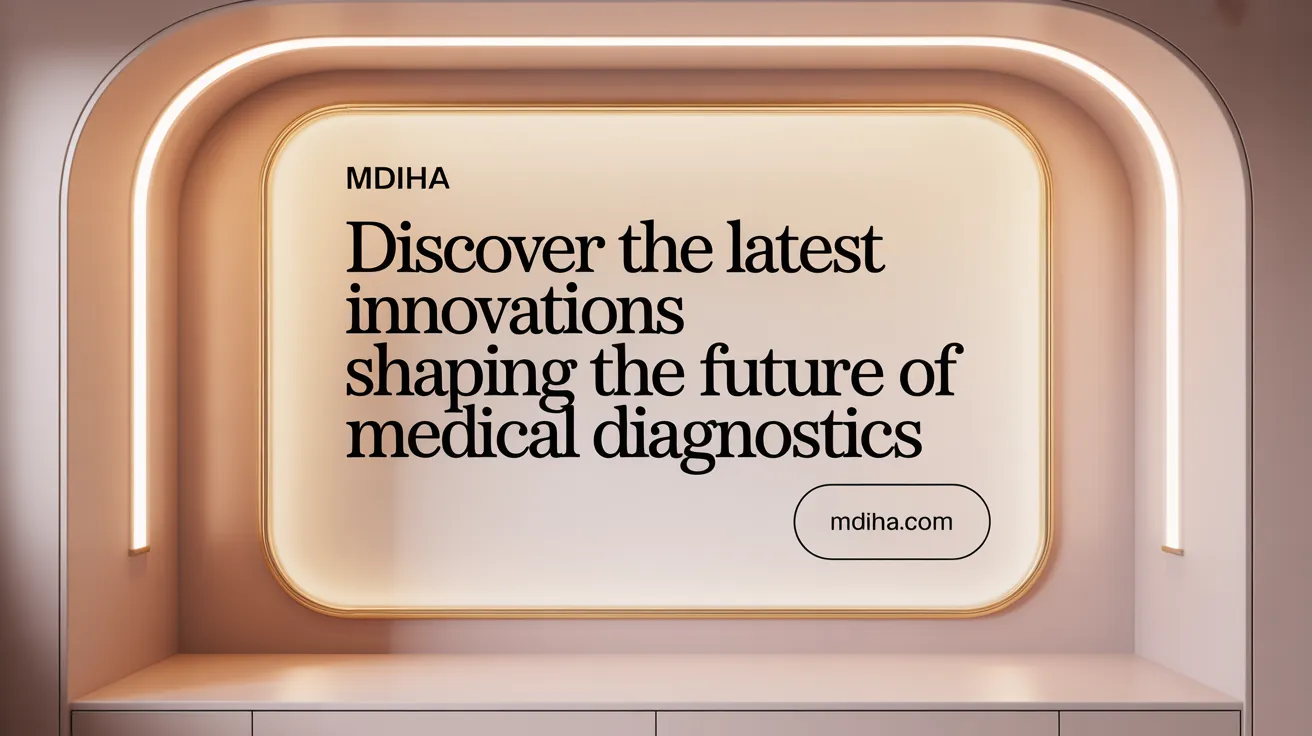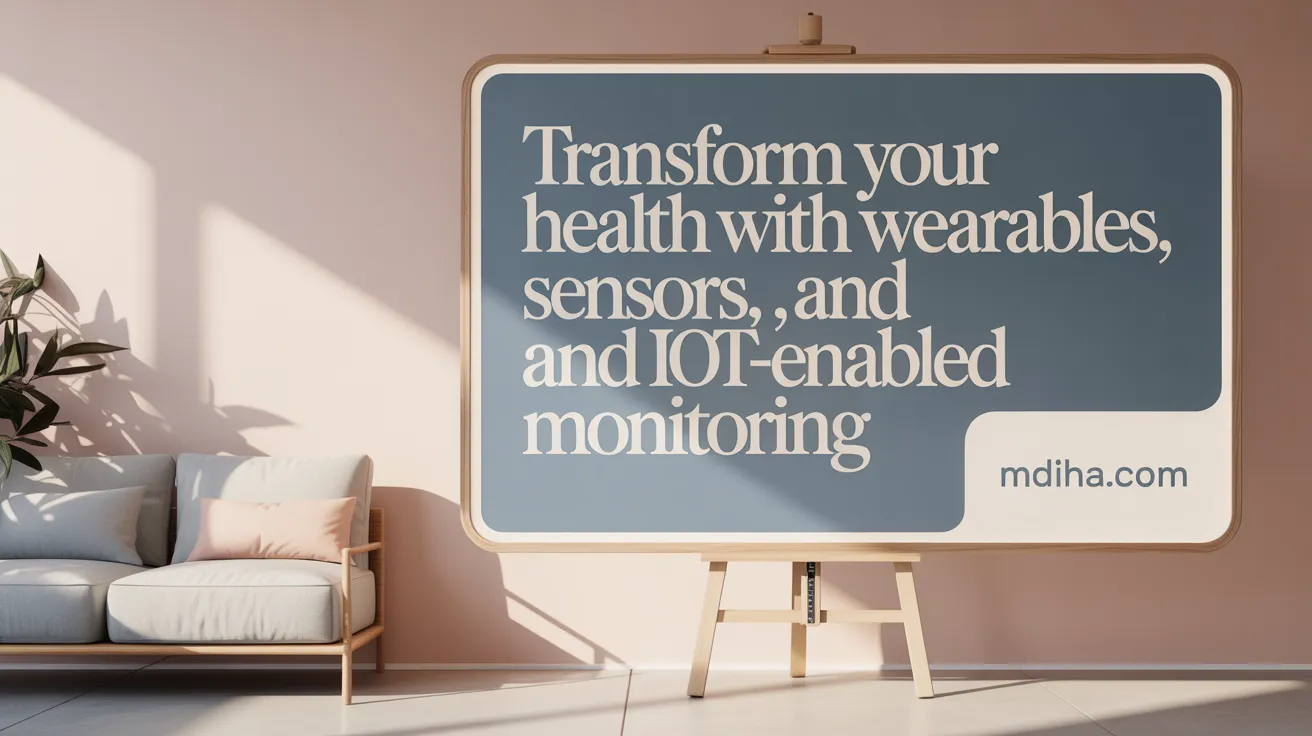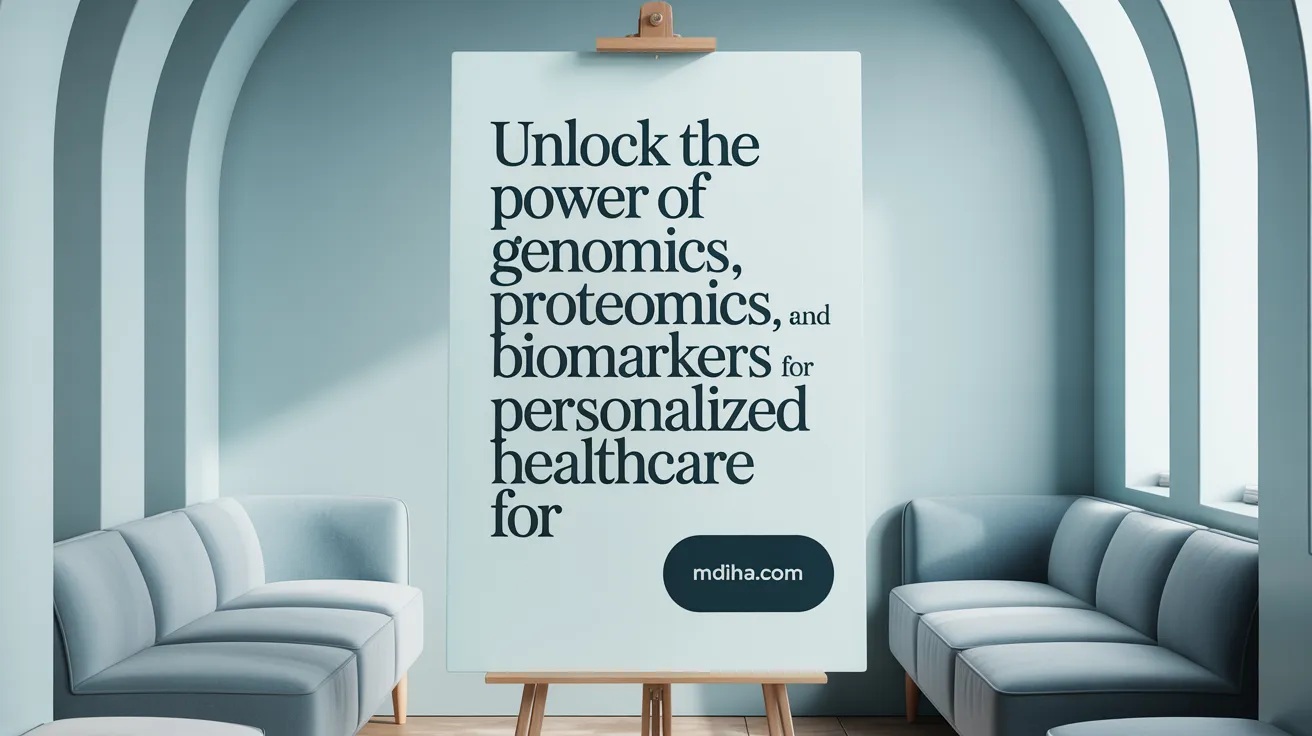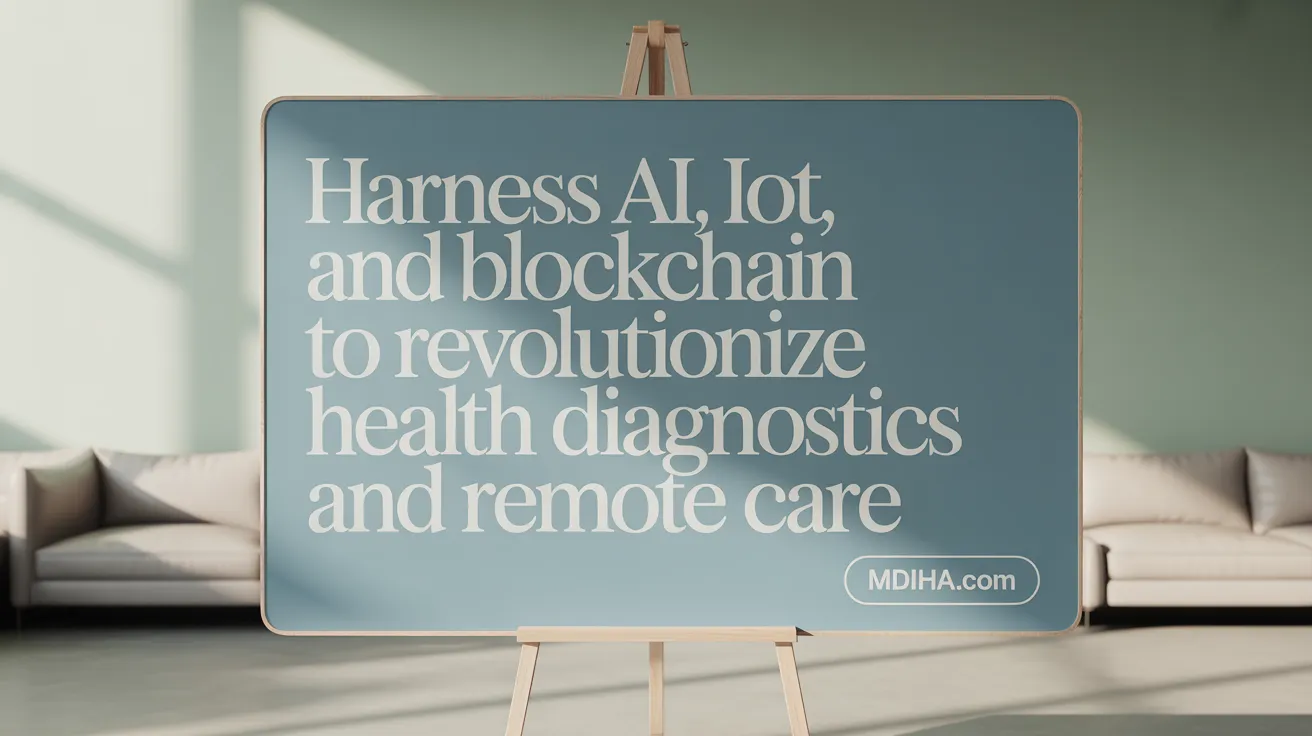Shifting Healthcare Paradigms with Advanced Diagnostics
Advancements in medical diagnostics are revolutionizing the way healthcare is delivered, shifting from traditional reactive approaches to proactive, precision-focused care. By leveraging innovative technologies such as wearable sensors, molecular diagnostics, and AI-driven analytics, healthcare providers and patients can monitor health status continuously, detect diseases early, and implement personalized treatments. This transformation enhances patient outcomes, reduces costs, and fosters a preventive healthcare ecosystem that is patient-centered and sustainable. Understanding these advanced diagnostics and their integration with digital health tools is key to navigating the future of health monitoring and disease management.
The Foundations of Advanced Diagnostic Technologies in Proactive Health Monitoring
Advanced diagnostic technologies include cutting-edge tools like molecular diagnostics, next-generation sequencing (NGS), liquid biopsies, high-resolution imaging, and wearable sensors. These innovations allow healthcare providers to detect diseases early and with high accuracy, often before symptoms appear. Incorporating AI, IoT, and blockchain technologies further elevates their capabilities. AI enhances data analysis, enabling predictive insights and supporting personalized treatment plans. IoT connects wearable devices and sensors for continuous real-time health monitoring, while blockchain offers a secure and transparent way to store and share sensitive health data.
In proactive health management, these diagnostics play a crucial role by enabling continuous assessment of vital signs, early risk detection, and personalized health interventions. They help identify health issues from subtle changes in data—such as heart rate variability or gait—and facilitate early action, significantly reducing diagnostic errors and improving patient safety.
The synergy of these advanced systems supports a shift from reactive care to prevention and early detection. This approach not only enhances individual health outcomes but also contributes to more efficient healthcare systems by enabling tailored therapies and minimizing costly late-stage treatments.
By harnessing the power of molecular techniques, AI-driven analytics, IoT connectivity, and blockchain security, modern diagnostics ensure precise, timely, and patient-centered care. Overall, they empower healthcare providers and individuals to stay ahead of diseases, leading to a future where health management is proactive, personalized, and significantly more effective.
Recent Breakthroughs and Emerging Trends Shaping Medical Diagnostics
 The field of medical diagnostics is experiencing rapid evolution through the adoption of innovative diagnostic technologies. High-throughput sequencing (HTS), powered by next-generation sequencing (NGS), has revolutionized pathogen analysis and genetic profiling, providing high-resolution insights essential for outbreak tracking, personalized medicine, and understanding disease evolution.
The field of medical diagnostics is experiencing rapid evolution through the adoption of innovative diagnostic technologies. High-throughput sequencing (HTS), powered by next-generation sequencing (NGS), has revolutionized pathogen analysis and genetic profiling, providing high-resolution insights essential for outbreak tracking, personalized medicine, and understanding disease evolution.
Molecular diagnostics have advanced with techniques like multiplex PCR and metagenomics, enabling the rapid detection of multiple pathogens directly from clinical samples. This shift toward culture-independent methods increases sensitivity, reduces diagnosis time, and supports syndromic testing, which is crucial for timely public health responses.
Wearable sensors and Internet of Things (IoT) devices are now integral for continuous health monitoring. Devices featuring ECG sensors, blood pressure monitors, and even smart contact lenses collect real-time data, facilitating early detection of conditions such as arrhythmias and diabetes. The integration of AI and machine learning enhances data analysis, allowing for predictive diagnostics and personalized health management.
Emerging trends also include blockchain applications in healthcare for secure and transparent health data sharing, which addresses privacy concerns and promotes interoperability. Liquid biopsies and lab-on-a-chip technologies offer non-invasive, rapid testing options suitable for resource-limited environments, pushing diagnostics further into point-of-care settings.
Furthermore, robotics and automation are transforming laboratory workflows, improving diagnostic accuracy and efficiency. Automated sample handling and analysis systems minimize human error and increase throughput, supporting large-scale screening and complex diagnostic procedures.
Overall, these advancements are steering diagnostics toward more personalized, accessible, and precise healthcare solutions. As these trends continue to evolve, they promise to enhance early detection, improve treatments, and support public health infrastructure at an unprecedented scale.
Health Monitoring Devices and Technologies: Wearables, Sensors, and the IoT Ecosystem
 Current health monitoring devices and technologies are rapidly advancing, featuring a wide range of wearable gadgets and embedded sensors designed for continuous health data collection. Wearables such as smartwatches, fitness trackers, biometric clothing, and even smart contact lenses incorporate sensors like accelerometers, ECG, EEG, and photoplethysmography (PPG) that monitor vital signs, activity levels, and internal conditions.
Current health monitoring devices and technologies are rapidly advancing, featuring a wide range of wearable gadgets and embedded sensors designed for continuous health data collection. Wearables such as smartwatches, fitness trackers, biometric clothing, and even smart contact lenses incorporate sensors like accelerometers, ECG, EEG, and photoplethysmography (PPG) that monitor vital signs, activity levels, and internal conditions.
These devices facilitate remote patient monitoring (RPM), early disease detection, and health management by transmitting data over the Internet of Things (IoT) infrastructure. IoT platforms connect these sensors to healthcare systems, allowing real-time data analysis, secure sharing, and integration into electronic health records. Advances in sensor technology, miniaturization, and energy harvesting have enhanced measurement accuracy, user comfort, and battery longevity.
The IoT ecosystem in healthcare involves multiple wireless communication protocols—Bluetooth Low Energy (BLE), Wi-Fi, Zigbee, LoRa, and RFID—to reliably transfer data from the device to cloud servers or local gateways. This network supports scalable, secure, and interoperable health data exchange.
Furthermore, machine learning algorithms analyze the amassed data to enable predictive diagnostics, personalize treatment plans, and identify health trends before symptoms emerge. Deep insights derived from wearable data help clinicians deliver proactive care, reduce unnecessary interventions, and improve patient outcomes.
In summary, the convergence of sophisticated wearables, embedded sensors, IoT connectivity, and advanced analytics is transforming health management from reactive to proactive, empowering individuals and making healthcare more accessible and personalized.
Implementing Advanced Diagnostics in Healthcare: Techniques and Strategic Approaches
To effectively incorporate advanced diagnostic tools into healthcare systems, a combination of technological integration and strategic planning is essential.
Clinicians and technicians must focus on interoperability, ensuring that diverse diagnostic data from molecular tests, imaging, and AI analyses can seamlessly communicate across different platforms and electronic health records. This integration enhances real-time data accessibility and reduces delays in diagnosis.
Diagnostic stewardship plays a vital role, involving the judicious use of diagnostic tests based on established clinical guidelines. This approach minimizes unnecessary testing, prevents misdiagnoses, and promotes cost-effective care.
Training and education initiatives are crucial for clinicians to stay proficient with new technologies. Regular training sessions, continuous education programs, and decision support tools help improve diagnostic accuracy and clinician confidence.
Aligning regulatory and reimbursement policies is also pivotal. Clear pathways for device approval and insurance coverage promote adoption, reduce administrative barriers, and encourage innovation.
Multidisciplinary collaboration fosters a comprehensive approach, involving physicians, radiologists, laboratory scientists, informaticians, and patient representatives. This teamwork ensures that diagnostic processes are accurate, efficient, and patient-centered.
Implementing quality control measures, such as error reporting, root cause analysis, and routine performance monitoring, helps identify areas for improvement and sustain high diagnostic standards.
Overall, the successful integration of advanced diagnostics depends on strategic leadership, stakeholder engagement, continuous process refinement, and the active participation of patients and caregivers. These efforts collectively optimize diagnostic accuracy, speed, and ultimately, patient health outcomes.
Critical Applications of Advanced Diagnostic Tools: Genomics, Proteomics, and Biomarkers
 Advanced diagnostics have become essential in modern healthcare, enabling precise pathogen identification and personalized treatment strategies. Whole genome sequencing (WGS) is a powerful technology that provides high-resolution insights into microbial genomes. It is widely used for accurate bacterial identification, detecting antimicrobial resistance genes, and analyzing virulence factors. Despite its detailed output, WGS remains resource-intensive due to its complexity and data analysis requirements.
Advanced diagnostics have become essential in modern healthcare, enabling precise pathogen identification and personalized treatment strategies. Whole genome sequencing (WGS) is a powerful technology that provides high-resolution insights into microbial genomes. It is widely used for accurate bacterial identification, detecting antimicrobial resistance genes, and analyzing virulence factors. Despite its detailed output, WGS remains resource-intensive due to its complexity and data analysis requirements.
In contrast, Matrix-Assisted Laser Desorption/Ionization Time-of-Flight Mass Spectrometry (MALDI-TOF MS) offers a rapid and cost-effective approach. It can identify bacteria and fungi in minutes with a resolution comparable to WGS, making it suitable for routine clinical use and environmental monitoring. Its speed and affordability have led to its adoption in hospitals, laboratories, and even specialized settings like space stations and cleanrooms.
Molecular diagnostics include techniques such as PCR and nucleic acid hybridization, which detect specific genetic mutations or infectious agents directly from patient samples. These methods support targeted therapies and quick pathogen detection, especially crucial during outbreaks.
Biomarker testing involves analyzing molecular signals associated with disease processes. It helps in prognosis, predicting treatment responses, and monitoring disease progression. Biomarkers enable personalized medicine by tailoring interventions based on individual molecular profiles.
Together, these advanced diagnostics significantly impact public health, particularly in infectious disease management and personalized medicine. They facilitate early detection, improve treatment outcomes, and help track pathogen evolution, underscoring their vital role in healthcare innovation.
For further exploration, the applications of advanced diagnostics, including WGS, MALDI-TOF MS, molecular diagnostics, and biomarkers, continue to expand. Their integration into clinical workflows enhances diagnostic accuracy and supports real-time surveillance, ultimately advancing patient care and disease control.
Integration of AI, Machine Learning, IoT, and Blockchain in Modern Health Diagnostics and Remote Monitoring
 Digital health diagnostics and remote patient monitoring are transforming significantly through the integration of advanced technologies such as artificial intelligence (AI), machine learning (ML), the Internet of Things (IoT), and blockchain. These tools work together to enhance the accuracy, security, and efficiency of healthcare delivery.
Digital health diagnostics and remote patient monitoring are transforming significantly through the integration of advanced technologies such as artificial intelligence (AI), machine learning (ML), the Internet of Things (IoT), and blockchain. These tools work together to enhance the accuracy, security, and efficiency of healthcare delivery.
AI and ML analyze vast amounts of healthcare data, including electronic health records, medical imaging, and genomic data. They facilitate early detection of diseases, support personalized treatment strategies, and power virtual health assistants that help improve patient engagement and adherence. By identifying complex patterns and generating predictive insights, these technologies optimize diagnostic procedures and treatment outcomes (AI and machine learning in healthcare diagnostics).
IoT devices, also known as the Internet of Medical Things (IoMT), enable continuous real-time monitoring of patients through wearable sensors, implantable devices, and ambient health sensors. They transmit health metrics such as heart rate, oxygen saturation, blood pressure, and activity levels to clinicians securely and efficiently. This seamless data flow supports proactive health management and rapid intervention, reducing hospital admissions and improving long-term health (IoT-based healthcare monitoring; Remote patient monitoring devices).
Blockchain technology enhances the security and interoperability of health data. Its decentralized, tamper-proof ledger ensures patient information remains private, immutable, and accessible only to authorized parties. Blockchain also supports the creation of smart contracts—for instance, automating consent, billing, and claims processing—reducing administrative errors, fraud, and delays (Blockchain in healthcare).
Furthermore, the combination of these technologies under federated learning frameworks allows for collaborative data analysis without compromising patient privacy. Data remains decentralized, sharing learning insights while safeguarding sensitive information.
Despite these advancements, challenges such as scalability, standardization, and seamless interoperability between different systems persist. Addressing these hurdles is crucial to fully realize the potential of AI, IoT, and blockchain for smarter, safer, and more accessible health diagnostics and remote monitoring.
Transforming Healthcare Models: The Shift to Proactive, Patient-Centered Care with Advanced Monitoring
In what ways does proactive health monitoring transform healthcare models towards risk-based, preventive, and patient-centered care?
Proactive health monitoring significantly shifts traditional healthcare from reactive treatment to a more preventive and personalized approach. Using wearable devices and advanced data analytics, healthcare providers can continuously collect real-time health data such as heart rate, blood pressure, oxygen levels, and activity metrics.
This continuous monitoring enables early detection of health issues by identifying subtle changes—like irregular heart rhythms or gait abnormalities—before symptoms even appear. As a result, clinicians can intervene early, reducing the progression of chronic diseases and minimizing the need for extensive treatments later, supporting early detection through wearables and proactive health screening.
Moreover, integrating wearable data with electronic health records (EHRs) and employing AI-driven predictive analytics supports tailored health plans. Patients become active partners in their health management, engaging through personalized insights and timely alerts for lifestyle modifications or medication adjustments. These innovations leverage machine learning and wearable data and AI integration in healthcare.
This shift towards proactive care not only improves health outcomes but also enhances patient engagement and satisfaction. It minimizes unnecessary hospital visits and diagnoses conditions at a stage when intervention is more effective. As a consequence, healthcare costs decrease, and system efficiency improves, aligning with the triple aim of better population health, improved patient experience, and lower costs, as highlighted in benefits of remote patient monitoring and proactive healthcare benefits.
Overall, proactive health monitoring fosters a healthcare model that is risk-based, preventive, and deeply centered around individual needs, making health systems more sustainable and responsive to patient needs. This evolution is supported by advancements in smart technologies transforming health and the integration of wearables improving patient outcomes.
Embracing the Future of Health with Advanced Diagnostics
Advanced diagnostics and proactive health monitoring technologies are changing the healthcare landscape by enabling earlier disease detection, personalized treatment, and continuous patient engagement. The convergence of sophisticated diagnostic tools, wearables, AI, IoT, and blockchain is fostering a seamless, secure, and data-driven healthcare ecosystem that prioritizes prevention and patient-centered care. Though challenges remain in implementation, regulation, and data management, ongoing innovation and collaboration are paving the way for improved health outcomes, reduced costs, and more equitable healthcare access globally. Embracing these advancements is essential for healthcare providers, policymakers, and patients to transition towards a sustainable and proactive health management future.
